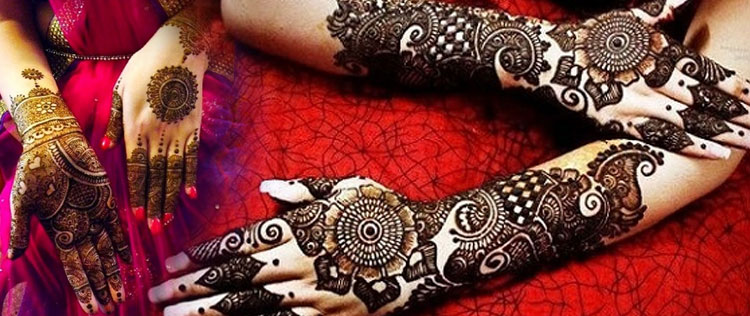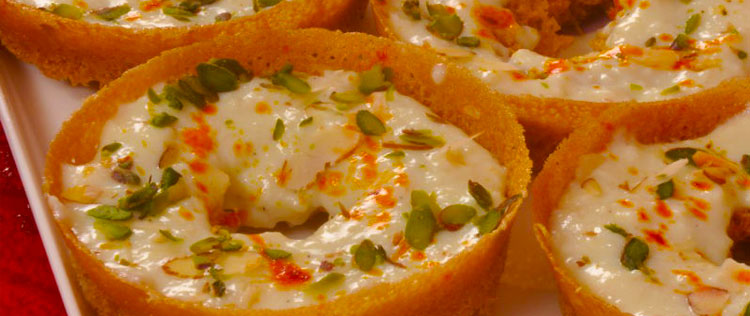Ghewar – a Sweet Delight of the Festive Monsoon Season in Jaipur
Sawan aayo: Lehariya – Mehendi – Ghewar: Abundance of offerings from Jaipur in the festive month
In the month of Sawan(सावन), three things found in the Jaipur city is on everyone’s mind and it does come to their mouth. A season of happiness, colours and sweet dishes, सावन in the Jaipur city marks the specialty of the Teej festival too.
The three offerings of Jaipur in the month of Sawan:
1. Lehariya Print:
A celebrated month, the offerings of the Jaipur city in this month speak of the gorgeous Lehariya print which is seen in the clothes adorned by the women in the city.

Lehariya is a print that is found in bright and fast colours and is abundantly flaunted by women in their saris and suits.
2. Mehendi (Henna):
The next thing is the spectacular henna designs that are etched on the hands of women in this month of सावन festivity.

3. Delicious Ghewars:
The last but definitely not the least is the delicious and savoury Ghewar (घेवर) that are soaked in sugar to spread happiness in the month of colour and festivity.
Keeping the post ‘sweet-dishes and desserts’ centric, the sweet dish Ghewar is taking new forms, designs and varieties in its way of making in the Jaipur city. Varieties begin from, when you have types to choose from –
- Simple Ghewar
- Rabri Ghewar (रबड़ीघेवर)
- Paneer Ghewar (पनीरघेवर)
Pure ghee – flavoured ghewars:
Ghewars which are made in pure desi ghee and are also accompanied with rabri or panner, which is Rabri Ghewar or Paneer Ghewar made in desi ghee, are priced higher than the normal ones.
Nothing and no one beats the Laxmi Misthan Bhandar (LMB) and its ghewar offerings:
In this season of Sawan it has been noticed that Ghewars are fairly available almost everywhere in the Jaipur city now but the exquisite way the Paneer Ghewar is prepared and also how it tastes is only found to be the best at Laxmi Misthan Bhandar in the Johri Bazaar in the walled city.
There is no other competitor in the Jaipur market for sweet dishes who makes Ghewars as delicious as Laxmi Misthan Bhandar.
These Ghewars have become a name not only in the Jaipur city, but also amongst the residents of the nation and across borders of the country too.
Creator of the dish Paneer Ghewar at LMB:
Paneer Ghewar was a recipe and origination of idea by the owner of Laxmi Misthan Bhandar, Seth Maliram.
He was inspired from the sweet dish Rasgulla and hence added a new line to his sweet store, the Paneer Ghewars.
Making Paneer Ghewars is similar to making Rasgullas:
The making of the new style of Ghewars was similar to how the Rasgullas are made.
In the year 1962, the making of the Ghewars was commenced. These were also prepared by use of Chena (छैना) just like it is utilized in the making of Rasgullas.
By the year 1972, these unique style Ghewars reached the hearts of people of the country and also foreigners.
The most superior quality of Ghewars:
The finest quality of these Ghewars is that they can be eaten all the year round and their taste and flavor change by every changing season.
Making ghewars: A brief
Ghewars are circular in their shape and make.
A 4 inch jaali develops around the circumference of the Ghewar by itself. It is also said that more than 500 small holes also develop themselves on the Ghewar.
Ghewars develop a shape, develop small holes and finally get made due to the heat of the gas which is maintained at a particular temperature.
The man involved in cooking and readying up the Ghewars are highly trained in this skill and due to their excellent skills, they also prepare ghewars of different shapes on their own.












